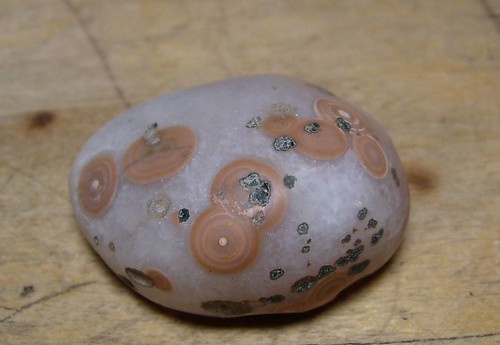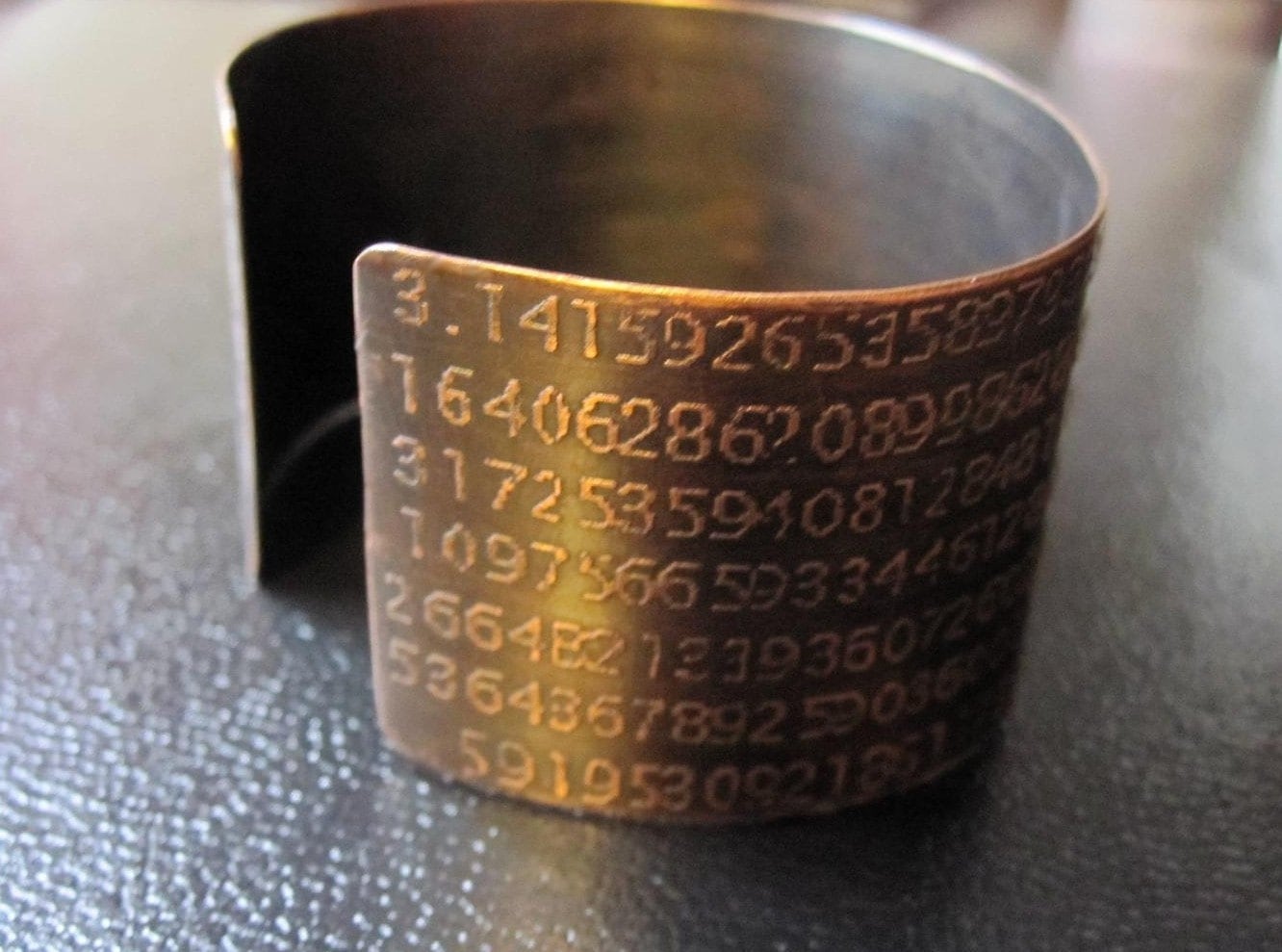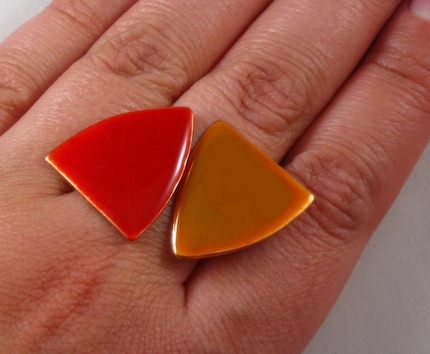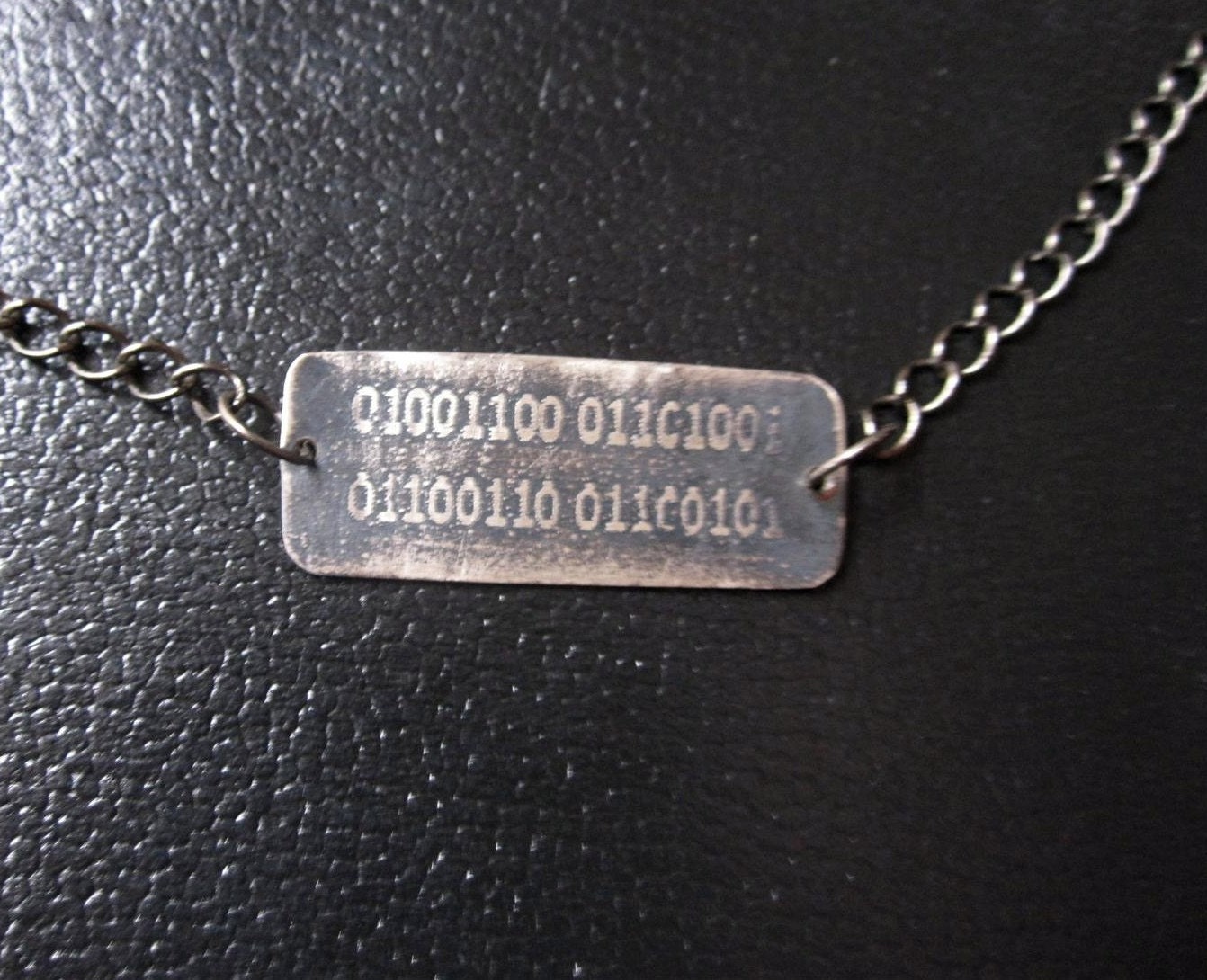
Wrap Dress With Shawl Collar by Lirola
I have a pattern I bought that I really like. Can I sell what I make based on that pattern?
Yes. Unequivocally.
Many patterns—such as you get from your favorite fabric store, for example—have a warning on the cover to the effect of: "You can't use this commercially!" This statement holds no water in court. To sum up from an excellent write-up at tabberone.com from an interview with another IP lawyer:
Folks, a license is not a condition a copyright owner can place upon the sale of an item without the consent of the purchaser. The courts are adamant about this. A license...requires the approval of all parties, as well as many other conditions. Patterns are sold, not licensed. Anyone who says otherwise is badly misinformed.
Whatever you make from patterns you buy—at the craft store, on Etsy, wherever—you are legally allowed to sell.
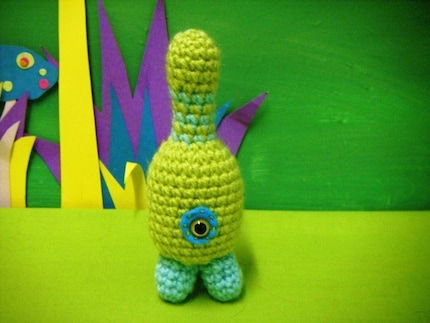
Amigurumi Alien Tripod Pattern by rosieok
I'm selling a pattern on Etsy. What are my rights?
Your pattern—and only your pattern—is definitely subject to copyright. This means that you can take people to task for:
- reselling it as their own
- copying it and selling the copies
- copying it and giving it away
- otherwise using your words and images without your consent
If someone sells what they've made based off of your pattern, that's allowable. When you put up a pattern for sale, think of it as selling the idea of the pattern out into the world. The reality of the pattern is a separate thing entirely. (Though, I have heard many people who sell patterns say that oftentimes when they see the finished item being sold by someone else, it doesn't look quite as good as the first, original version!)
If you are uncomfortable with the idea of someone recreating your idea and selling it, then it's probably best you don't sell the pattern.
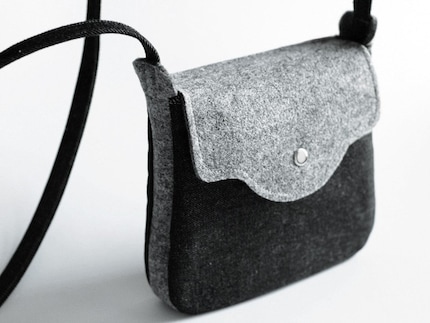
Q Bag 01 by FoksForm
Someone is selling a knock-off of my bag/shirt/plushie! What can I do?
Clothing does not qualify for copyright. Neither do purses, hats, scarves, or stuffed animals—unless there is some kind of mechanical improvement or innovation involved. A new kind of clasp, a mechanism inside a toy that makes it talk or walk: these things are certainly patentable. Don't get me wrong.
But otherwise, it's hard to really do anything.
(NOTE! If part of the knock-off includes a print or visual design of your creation, that is a different issue entirely. I'm referring only to the physical construction of the item.)
Most of these items do qualify for a design patent, however; if your bags have a distinct "look" to them, or if you have a signature flourish you add to all your pieces, for example, you can pursue that angle. Filing a patent can be an expensive, time-consuming process, so it's not always a feasible option for everyone.
Lawyer Mom also points out that once you sell an item, it becomes a lot more difficult to patent it. It's a decision you need to make beforehand. If you are banking on keeping a super-unique design, this may be an option for you. Consult with your own IP lawyer to see if a design patent is an avenue you should pursue.
But let's say you don't have a design patent, and people are putting up their own versions of your best-selling product. Clothing, accessories, and stuffed animals don't qualify for copyright and there's very little legal recourse you have. Contacting the seller, or talking to Etsy, would be a good place to start.
If the work involves another copyrightable element (an original illustration or character design, for example), you do have the same options available to you that I've mentioned in other Lawyer Mom posts. (Contacting the seller, sending a cease and desist letter, etc.) Original quilt designs, too, are copyrightable.
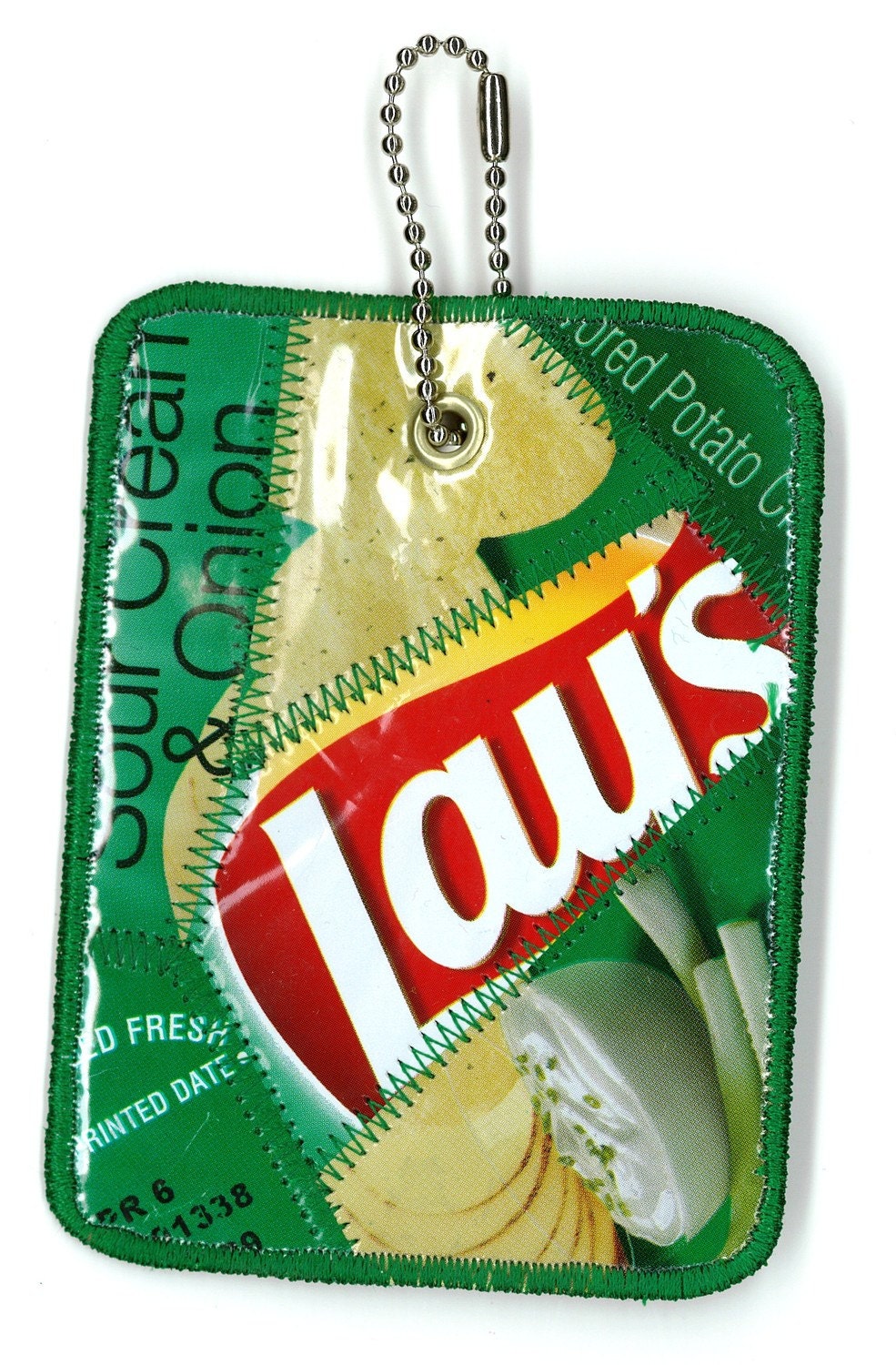
Luggage tag from repurposed Lay's Sour Cream & Onion bag by squigglechick
I use upcycled/repurposed trademarked material in my craft. Am I doing something wrong?
Generally speaking, you should be okay. With trademarked material, the clearer it is that you're not banking on the trademark to sell your product, or trying to recreate their product, the better. Product packaging, wrappers, labels, advertisements, etc are all fair game. The same goes for old t-shirts from concerts or other events. (Now, if you were screen-printing t-shirts with the Ramones logo on it and trying to sell it...obviously that's different!) All that's protected under Fair Use.
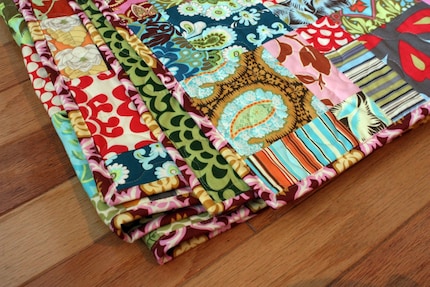
Amy Butler Twin Quilt by britters273
So then if I use fabric I bought at the fabric store, I'm fine.
Well...maybe.
My friend Rae wrote about this a while ago, after a fabric purchase she made sparked an investigation into IP and fabric:
...I’m 48 hours into this plan, and I’m already being surprised. Not by the process of quilting but by something I found as I quested into the rarely-explored (by me) section of quilting fabrics at the local JoAnn Fabrics: non-commercial, home use-only fabrics. What?
Now, something like a navy blue twill, or a cream-colored linen, is going to be impossible to copyright. If you find that language on the trim of your fabric and it's something solid-colored, that language holds about as much legal water as my earlier examples with patterns. But designs constitute artwork, and as such, some of the more intricate patterns you see on fabric may very well be copyrighted, such that you cannot legally sell items made from that fabric without first getting permission from the designer.
Unfortunately, I don't know of any good resources that deal specifically with fabric and fashion designers! Free Patents Online is really easy to navigate (a bit cleaner than Copyright.gov), plus it includes pictures so you can see the design in question. If anyone has a comprehensive list of names or organizations who have designed fabrics for stores like Michael's, JoAnn's, A. C. Moore, etc., that'd be a big help!
If you can't find the designer for your fabric, you can always run the risk of selling what you make anyway. Just remember that you run the risk of being asked to remove those items from sale (and possibly to destroy them as well).

Jennifer Love Hewitt's dress from the 2009 Emmy Awards by CelebrityRecreations
I really love the $item_of_clothing that $someone wore in $something ! Can I make a copy? Is it okay if I sell it?
Yes, long as you're not trying to claim that it's that designer's dress (trademark violation!). Patents do exist on some clothes, but again, those have less to do with fashion design and more to do with actual construction (an innovation in maternity dresses, for example).
If the item includes a visual design or a print, however, then that's a big no-no.
I have another question you didn't answer! / I think you got something wrong.
In either case, feel free to email me; I use the handle "kokoba" on gmail. You can also leave a comment here. Convos on Etsy are possible, if you prefer, but emailing or comments here will guarantee a quicker turnaround time on responses.
Again, Lawyer Mom posts do not constitute legitimate legal advice. If you are in hot water, need to take legal action, or want to do anything else official with IP stuff, consult an IP attorney in person who can talk over your situation with you. All of this information is provided as a jumping-off point and a conversation starter, nothing more. All Lawyer Mom posts are written by me (after consulting with Lawyer Mom), and by submitting a question to me/us you signify that you understand those conditions and will hold neither me nor Lawyer Mom legally responsible for anything bad that may happen to you as a result of taking this or any Lawyer Mom post as serious advice in lieu of consulting another professional.

